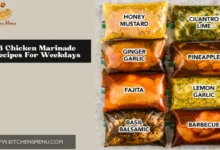Kylie Jenner Favorite Justin’s Almond Butter

Almond butter that includes its history, local variants, and a well-liked recipe.
Uncovering Almond Butter: History, Types, and a DIY Recipe
Made from pulverized almonds, almond butter is a creamy spread that has gained appeal all over the world for its nutritious value, rich flavor, and adaptability. We explore the history of almond butter, its regional variants, and offer a step-by-step method for creating it at home in this extensive investigation.
Inception and Chronicle
The main component of almond butter, almonds, have been farmed for millennia; evidence of its use dates back thousands of years. Almonds arrived from the Middle East and travelled around the Mediterranean, landing in North Africa and Southern Europe, where they were included into regional cuisines.
It is most likely from old culinary traditions that the method of crushing almonds into a spreadable paste came about. Ground almonds were employed in a variety of meals, including sauces and sweets, by ancient civilizations including the Greeks and Romans. However, almond butter wasn’t generally accessible until the development of contemporary food processing methods.
Food technological developments at the beginning of the 20th century made it possible to produce almond butter on a commercial scale. Almond butter gained appeal among health-conscious customers looking for plant-based sources of protein and good fats when it was first advertised as a wholesome substitute for dairy butter.
Local Differences
Although almond butter is a staple in many areas of the world, production and consumption vary by location due to a variety of factors, including agricultural methods, cultural preferences, and culinary traditions.
- United States: One of the world’s biggest producers and consumers of almond butter is the United States. The popularity of plant-based diets and growing knowledge of the health advantages have made almond butter a common pantry staple for many Americans. There are several alternatives available from commercial companies, including as flavoured, crunchy, and smooth types.
- Middle East: Used in both savoury and sweet recipes, almonds are a treasured ingredient in Middle Eastern cuisine. Although it may not be as widely available as other nut-based spreads in the area, ground almonds are frequently used in sweet treats like halva and baklava.
- Europe: Almond butter is a gourmet favourite in Europe, where it’s frequently found in specialist markets and artisanal food shops. European varietals may have varied flavour profiles and textures according to regional manufacturing techniques and tastes.
- Asia: In Asia, almond butter is becoming more popular, especially in nations where wellness and health-consciousness are on the rise. Almond butter is utilised not just as a spread but also in Asian-inspired dishes like sauces and stir-fries.
Justin’s Almond Butter Recipe
It’s surprisingly easy to make your own almond butter at home, and you can adjust the texture and flavour to your preference. This is the basic recipe for making almond butter at home:
Components:
2-cups uncooked almonds
A dash of salt, sweetener (like honey or maple syrup), and flavourings (like cinnamon or vanilla essence) are optional.
Directions:
- Set the oven temperature to 175°C, or 350°F. Arrange the almonds in a solitary layer on a baking sheet and bake them for ten to twelve minutes, or until they become aromatic and have a hint of colour. Give the almonds a little time to cool.
- Pour the roasted almonds into a powerful blender or food processor. Feel free to add more flavourings or a bit of salt if desired.
- Process the almonds for ten to fifteen minutes, stopping the processor as necessary to scrape down the container walls, until the almonds release their oils and transform into a creamy, smooth butter. Please be patient, since the speed at which this procedure completes will depend on the power of your apparatus.
- Taste the almond butter and adjust the spice if necessary after it reaches the consistency you’ve desired. At this point, you can add a tiny quantity of sugar if you’d like your almond butter sweeter.
- Store the almond butter in the refrigerator for up to several weeks by transferring it to a fresh jar or airtight container.
Not only is almond butter a tasty spread, but it’s also a multipurpose component that can improve everything from breakfast to dessert. Almond butter is a tasty and nutritious spread that may be spread over toast, mixed into smoothies, or used as a dipping sauce for fruits and vegetables.
As we’ve seen, the history of almond butter is deeply entwined with the antiquated beginnings of almonds, developing over ages to become a cherished pantry staple that is cherished globally. Almond butter, whether it is manufactured professionally or at home, captures the spirit of healthful, nourishing food, making it a perennial favourite for many years to come.
Thus, the next time you open a jar of almond butter, pause to recognise the rich culinary legacy and historical background of this simple yet adaptable spread. Almond butter is a delicious and nutritious snack or ingredient in gourmet dishes that will please your palate and fill you up.
This thorough investigation gives readers a thorough grasp of this well-liked spread by illuminating the history, regional differences, and handmade production of almond butter.



